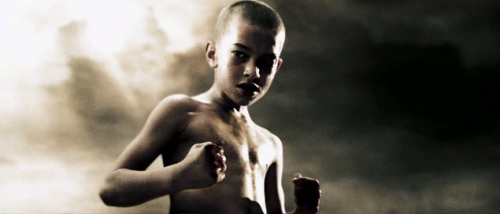Read this with the movie trailer voice in your head: In a world where men and masculinity are valued above women and femininity and the voice of god sounds like a man. Can there be any sense of justice? Can a hero rise from the ashes that were this country’s dreams of equality?
Now read this with nerdy sociologist voice: In this piece, Nathan Palmer discusses how we manipulate our voices to perform gender and asks us to think about what our vocal performances say about patriarchy in our culture.
My Mom’s Phone Voice
Voice & The Performance of Gender
We have talked extensively on SociologyInFocus about how gender is a performance. That is, we “do gender”. Right now if you wanted to act feminine or to act masculine you could change your clothing, how you move, how you sit, the facial expressions you use, but arguably the first thing you would change is your voice. Gender is a performance and like any performance there are costumes, lines, mannerisms, etc. that you embody to perform the role. The rules of gender performance are so clear and present throughout society that even my 5 year old can recite them:
Patriarchy, Cultural Symbols, and In A World
As a sociologist concerned with inequality, I think the juiciest question to ask is, are all voices treated equally? That is, do we empower some gender presentations and disempower others? This question is the central question explored in the movie In A World:
The movie, which was written and directed by it’s star Lake Bell, is about a young woman who is trying to break into the voice over acting world, but struggles mightily because the industry is male dominated. In the movie and in reality, when Hollywood wants an authoritative voice, a powerful voice, or simply “the voice of god”, they turn to male voice over actors more often than not. We should stop and ask, why is it this way? Are masculine voices just naturally more powerful? Nah. If you’ve spent anytime with opera singers you know that both male and female voices can rattle your ribcage. The answer then must be cultural.
In any culture the people in it use symbols to communicate with one another. They fill these symbols with shared meaning and connect them with other ideas and symbols. For instance, today we associate blue with masculinity and pink with femininity, but a hundred years ago pink was a, “a more decided and stronger color, more suitable for the boy, while blue, which is more delicate and dainty, is prettier for the girl.”. The point here is that any symbol, whether it’s a color or the sound of a voice, is not inherently masculine or feminine, powerful or weak, etc. As a culture we put the meaning into the symbols.
So what does it say about our culture if we associate power with masculinity? The answer is simple, it suggests that we live in a patriarchal society (i.e. a society that values men and masculinity above women and femininity). That’s why it was so surprising to me when I read/watched interviews with Lake Bell where she put the blame back on women and something she calls the “sexy baby vocal virus.”
Bell expanded on this idea further in another interview:
There is one statement in this film and I am vocal about it: There is a vocal plague going on that I call the sexy baby plague, where very smart women have taken on this affectation that evokes submission and sexual titillation to the male species,” she says.
“This voice says ‘I’m not that smart,’ and ‘don’t feel threatened’ and ‘don’t worry, I don’t want to take charge,’ which is a problem for me because it’s telling women to take on this bimbo persona in order to please a man.
The problem of the sexy baby voice
To be honest, I’m not sure what to make of Bell’s criticism of the women who use the “sexy baby” voice. She asserts that “these women” have been “victimized” and “fallen pray to something”, but then clearly seems to be angry at them for their use of the voice. Furthermore Bell’s critique of women’s voices takes a social issue (patriarchy and the devaluing of all things feminine) and redefines it as an individual problem. If the women who use the “sexy baby” voice are using it to present themselves as non-threatening or highly sexual, then where did they get the idea in the first place? I’m not sure if Bell is arguing that the “sexy baby” voice is a reaction to a patriarchal society or that it the creates a patriarchal society.
In a world working through the issue of patriarchy, it would seem that even movies that are critiquing patriarchy can reinforce it.
Nathan Palmer, MA is a visiting lecturer at Georgia Southern University. He is a passionate educator, the founder of Sociology Source, and the editor of Sociology in Focus, where this post originally appeared.















